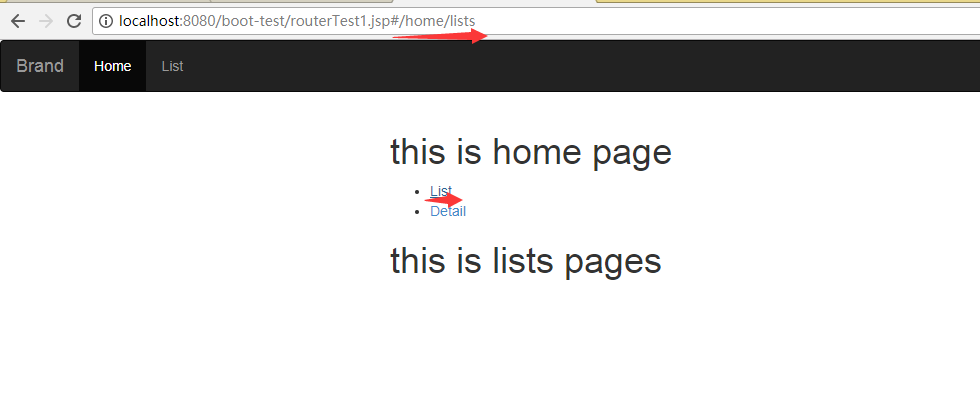vue2嵌套路由 vue2路由方式--嵌套路由实现方法分析
程序媛-jjl 人气:0本文实例讲述了vue2嵌套路由实现方法。分享给大家供大家参考,具体如下:
前面讲过了vue2路由基本用法,一般应用中的路由方式不会像上述例子那么简单,往往会出现二级导航这种情况。这时就需要使用嵌套路由这种写法。
<%@ taglib prefix="c" uri="http://java.sun.com/jsp/jstl/core" %>
<%@ page contentType="text/html;charset=UTF-8" language="java" %>
<html>
<head>
<title>routerTest1</title>
<c:import url="importFile.jsp"></c:import>
</head>
<body>
<div id="app">
<nav class="navbar navbar-inverse">
<div class="container-fluid">
<div class="navbar-header">
<a class="navbar-brand" href="#" rel="external nofollow" >Brand</a>
</div>
<div class="collapse navbar-collapse" id="bs-example-navbar-collapse-1">
<ul class="nav navbar-nav">
<%--定义跳转的路径--%>
<li class="active"> <router-link to="/home">Home</router-link></li>
<li> <router-link to="/list">List</router-link></li>
</ul>
</div>
</div>
</nav>
<div class="container">
<!—路由切换组件template 插入的位置 -->
<router-view></router-view>
</div>
</div>
<script type="x-template" id="modalTel">
<div>
<h1> this is home page </h1>
<div>
<ul >
<li>
<router-link to="/home/lists">List</router-link>
</li>
<li>
<router-link to="/home/detail">Detail</router-link>
</li>
</ul>
</div>
<router-view></router-view>
</div>
</script>
<script>
/*
* var Home = Vue.extend({
template:'<h1> this is home page </h1>',
})
* */
/*使用Javascript模板定义组件*/
var Home = Vue.extend({
template:'#modalTel'
})
/*创建路由器实例*/
const router = new VueRouter({
routes:[
{ path: '/', redirect: '/home' },
{
path:'/home',
component:Home,
/*嵌套下的路由(子路由)*/
children:[
{
path:'/home/lists',
component:{
template:'<h1> this is lists pages</h1>'
},
},
{
path:'/home/detail',
component:{
template:'<h1> this is detail pages</h1>'
},
}
]
},
{
path:'/list',
component:{
/*显示路由的属性*/
template:'<h1> this is list page----{{$route.path}}</h1>'
}
}
]
});
const app = new Vue({
router:router
}).$mount('#app')
</script>
</body>
</html>

上文中的 importFile,jsp 在上一篇路由基本用法中介绍过了,就是引入需要的文件。
希望本文所述对大家vue.js程序设计有所帮助。
加载全部内容